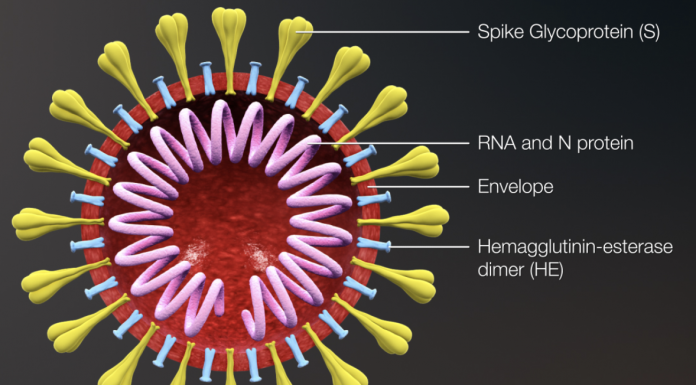
“It is absolutely 100% impossible that SARS-CoV-2 was made in a laboratory.”
June 9, 2020
ABC News – In the latest development in a dramatic saga about the origins of the novel coronavirus, virologists around the globe have fiercely debunked yet another claim that the virus was man-made.
This time, the allegation stemmed from a team of researchers from Britain and Norway, who warned in a research paper that current efforts to make a coronavirus vaccine are likely to fail because scientists have fundamentally misunderstood the virus SARS-CoV-2 that causes COVID-19.
The British/Norwegian team — also working on a vaccine — argued that their vaccine approach was likely to work where other existing efforts would fail.
They claim the virus’ RNA sequence has elements that appear man-made, or artificially inserted, and that their vaccine, Biovacc-19, will take these purported elements into account.
“The paper is nonsense,” said Vincent Racaniello, Ph.D., professor of virology at Columbia University. “The manuscript is replete with incorrect science.”
“It is absolutely 100% impossible that SARS-CoV-2 was made in a laboratory. The elements in the virus, SARS-CoV-2, all came from bat SARS-like CoVs that circulate in nature,” Racaniello told ABC News.
The British and Norwegian researchers, who hailed from St. George’s, University of London, and Immunor AS, a biotech company, respectively, did not respond to repeated requests for comment.
Despite overwhelming scientific consensus that the novel coronavirus came from nature, various scientific and pseudo-scientific claims have continued to fan the flames of a conspiracy theory that the virus was engineered in a Chinese lab.
The new British-Norwegian study gave the controversial theory a new spin: Coronavirus vaccine creation would fail because the virus contains several man-made components.
This team of researchers asserted their lab could produce a successful vaccine because it would take those components into account.
However, virologists tackling COVID who were interviewed by ABC News, said that vaccines already in human studies have indicated they are capable of triggering the immune system’s response.
Although it’s still early, there are positive signs that some current approaches to vaccine development are likely to work … Read more.
Opposing View –
BIOTECHNOLOGY, COMMENTARIES, HEALTH
June 2, 2020
The Case Is Building That COVID-19 Had a Lab Origin
By Jonathan Latham, PhD and Allison Wilson, PhD
Bioscience Resource Project – If the public has learned a lesson from the COVID-19 pandemic it is that science does not generate certainty.
Do homemade face masks work? What is the death rate of COVID-19? How accurate are the tests? How many people have no symptoms? And so on.
Practically the lone undisputed assertion made so far is that all the nearest known genetic relatives of its cause, the Sars-CoV-2 virus, are found in horseshoe bats (Zhou et al., 2020). Therefore, the likely viral reservoir was a bat.
However, most of these ancestor-like bat coronaviruses cannot infect humans (Ge et al., 2013). In consequence, from its beginning, a key question hanging over the pandemic has been: How did a bat RNA virus evolve into a human pathogen that is both virulent and deadly?
The answer almost universally seized upon is that there was an intermediate species. Some animal, perhaps a snake, perhaps a palm civet, perhaps a pangolin, served as a temporary host.
This bridging animal would probably have had an ACE2 cellular receptor (the molecule which allows cellular entry of the virus) intermediate in protein sequence (or at least structure) between the bat and the human one (Wan et al., 2020).
In the press and in the scientific literature, scenarios by which this natural zoonotic transfer might have occurred have been endlessly mulled.
Most were fuelled by early findings that many of the earliest COVID-19 cases seem to have occurred in and around Wuhan’s Huanan live animal market. [The latest data are that 14 of the 41 earliest cases, including the first, had no connection to the animal market (Huang et al. 2020)].
Since the two previous coronavirus near-pandemics of SARS (2002-3) and MERS (2012) both probably came from bats and both are thought (but not proven) to have transitioned to humans via intermediate animals (civets and dromedaries respectively), a natural zoonotic pathway is a reasonable first assumption (Andersen et al., 2020). Read more.



